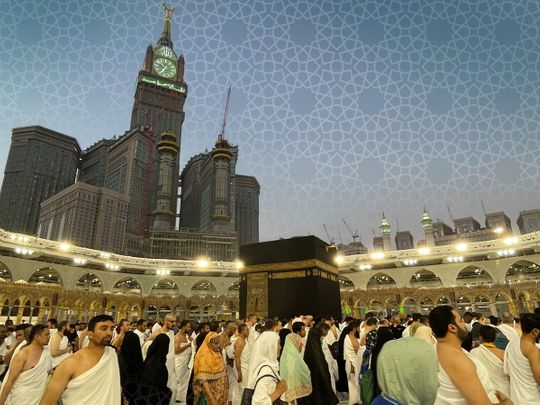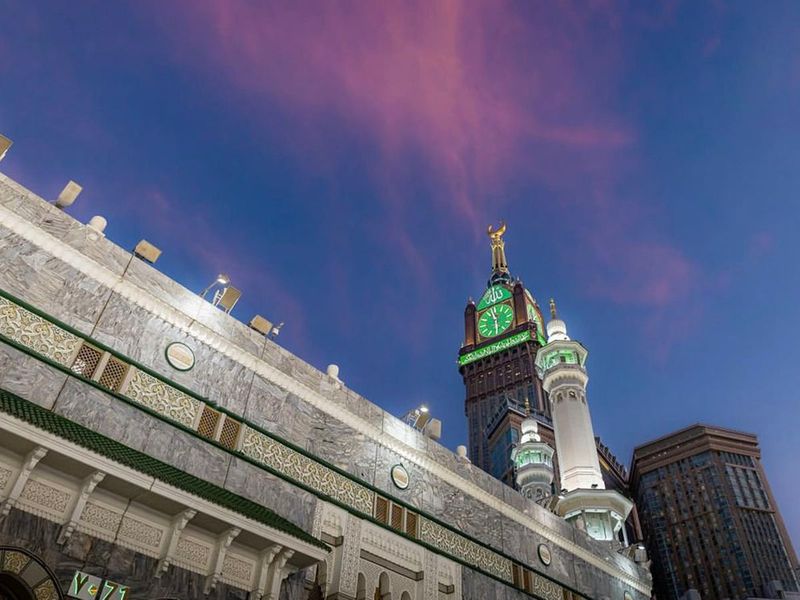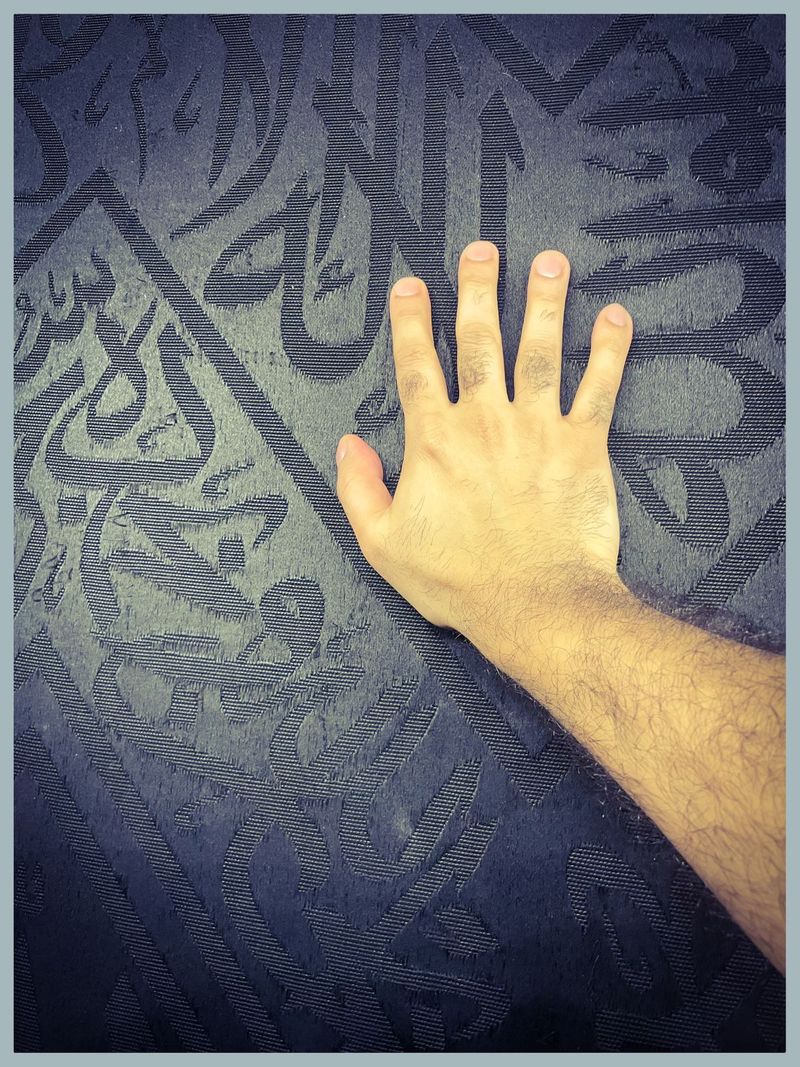
I hadn’t really planned it. My Umrah just unfolded. I was here today and a few days later, I found myself in Medina, Saudi Arabia. Typically, people go to Mecca first — where the rites of Umrah are performed but many people visit Medina (commonly simplified as Madinah) also as an extension of their pilgrimage.
My dad and I went the Sufi way. We flew to Medina first — which is less strenuous and relatively easier to navigate. Our cabbie spoke no English, so the ride from the airport to the hotel, next to the Prophet’s Mosque (Al Masjid An Nabawi), was a series of mistranslations and horseplay.
Next morning at Fajr, before the crack of the dawn, we were at the Prophet’s Mosque. I had seen the famous green dome of the stunning façade in pictures and videos only. To be able to look at it in real time was cathartic.
The second holiest place in Islam after the Great Mosque in Mecca (Al Masjid Al Haram) is where the Holy Prophet and his closest companions are buried.
Kaleidoscope of humanity
Medina has a special reverence in the hearts of the faithful. Turks rub shoulders with Indians, Indonesians walk with Emiratis, Russians sit next to Africans, Uzbeks pray alongside Americans, and adorable sand cats wade their way through the throngs.
There is a fusion of sorts — turbans, topis, takiyas, kiffayahs, kufis and the like. It is perhaps natural to feel blessed to be part of this kaleidoscope of humanity — as everyone respectfully files past the mausoleum of Prophet Muhammad (PBUH) and his close companions — the Caliphs Abu Bakr and Umar Ibn al-Khaṭtab.
As the Haramain High Speed train chugs out of Medina, you cannot help skip a heartbeat. It is never easy to bid bye to the city in which Prophet Muhammad (PBUH) established the faith. Nearly 15 centuries ago, the place offered him refuge and welcomed him wholeheartedly.
When the Prophet came to Medina from Mecca (622AD), the city sheltered him warmly. Upon Medina’s sacred soil, he worshipped, lived, shared God's message and breathed his last, and Medina is where he lies buried along with the people he dearly loved.
You cannot help miss the walk down its breezy streets at night, eating the best dates in the world or just sitting in the Prophet’s mosque.
Medina not only makes your soul tranquil, there is something about its agreeable air and gentle charm that is both serene and dreamy. It is as if you have sauntered into a paradise of sorts, where only the kindest of people amble around and sweet birds chirp from the minarets.
Spiritual centre of the earth
In Mecca, all roads lead to the courtyard of Al Masjid Al Haram or quite simply Haram. Inside the Great Mosque of Mecca, is the Kaaba — a cube like structure — Islam’s focal point.
Considered the most sacred site in Islam and the ‘House of God’ (Beit Allah), the precincts of Masjid Al Haram around the Kaaba are always chock-a-block with worshippers. The circumambulation (tawaaf in Arabic) or walking around the Kaaba never stops.
The square stone building, elegantly draped in perfumed black silk and cotton veil, is 12.86m in length and 11.03m in width. As the most sacred space in Islam, the Kaaba is the point to which all Muslims — anywhere in the world — turn to pray, and the direction to which their heads point in burial.
Located in the eastern corner of the Kaaba is the Black Stone (Hajar-e-Aswad), held together by a silver band. The stone symbolises the intersect that links heaven and earth. According to prophetic tradition, pilgrims must touch or kiss the stone. There was much jostling at this point but I managed to touch it.
Since it is considered the spiritual centre of the earth, the faithful are required to circumambulate the Kaaba. This is the most defining feature of the Umrah and a truly transformative spiritual experience.
The circuit around Kaaba, along with thousands upon thousands, in one motion, represents the idea of oneness and points to Islam’s universal message: you are all the same before the singular, ultimate, invisible, unseen, and all-powerful divinity.
A head of the state was also doing his tawaaf in front of me (I later came to know it was the president of Ivory Coast). Behind me an elderly Pakistani was beseeching God in chaste Punjabi. Whichever way you look at it, tawaaf is a pathway to salvation and a spiritual cleansing of sorts.

Journeying around the Kaaba
Kaaba and its majesty overwhelm you. You continue to circumambulate the Kaaba — counterclockwise — as the multiple colonnades and minarets of the Haram shimmer and shine in the light January wind.
The Holy Quran, Surah Al Baqarah, verse 144 states: “So turn your face towards the Sacred Mosque ˹in Mecca˺ — wherever you are, turn your faces towards it.” And it is then you begin to feel one with the universe.
In the act of moving around the Kaaba, you become conscious of its philosophy - a demonstration of unity - as you symbolically unite with particles, planets, the solar system, and galaxies in moving in the same direction.
You begin to see the inner logic of it all. Like a moth around the flame, revolving around a centre signifies a complete, unabridged, total allegiance of love.
People sob, whisper, lament, pray, meditate and reflect. These are people whom you do not know but you appreciate that no matter our different circumstance and background, our spiritual paths have converged.

It is when all the divisions and antagonisms dissolve and you realise that this journeying around Kaaba, this tawaaf, is in essence a journey of the heart (safar al qalb) around one’s own faith (imaan e mujmal) in God.










